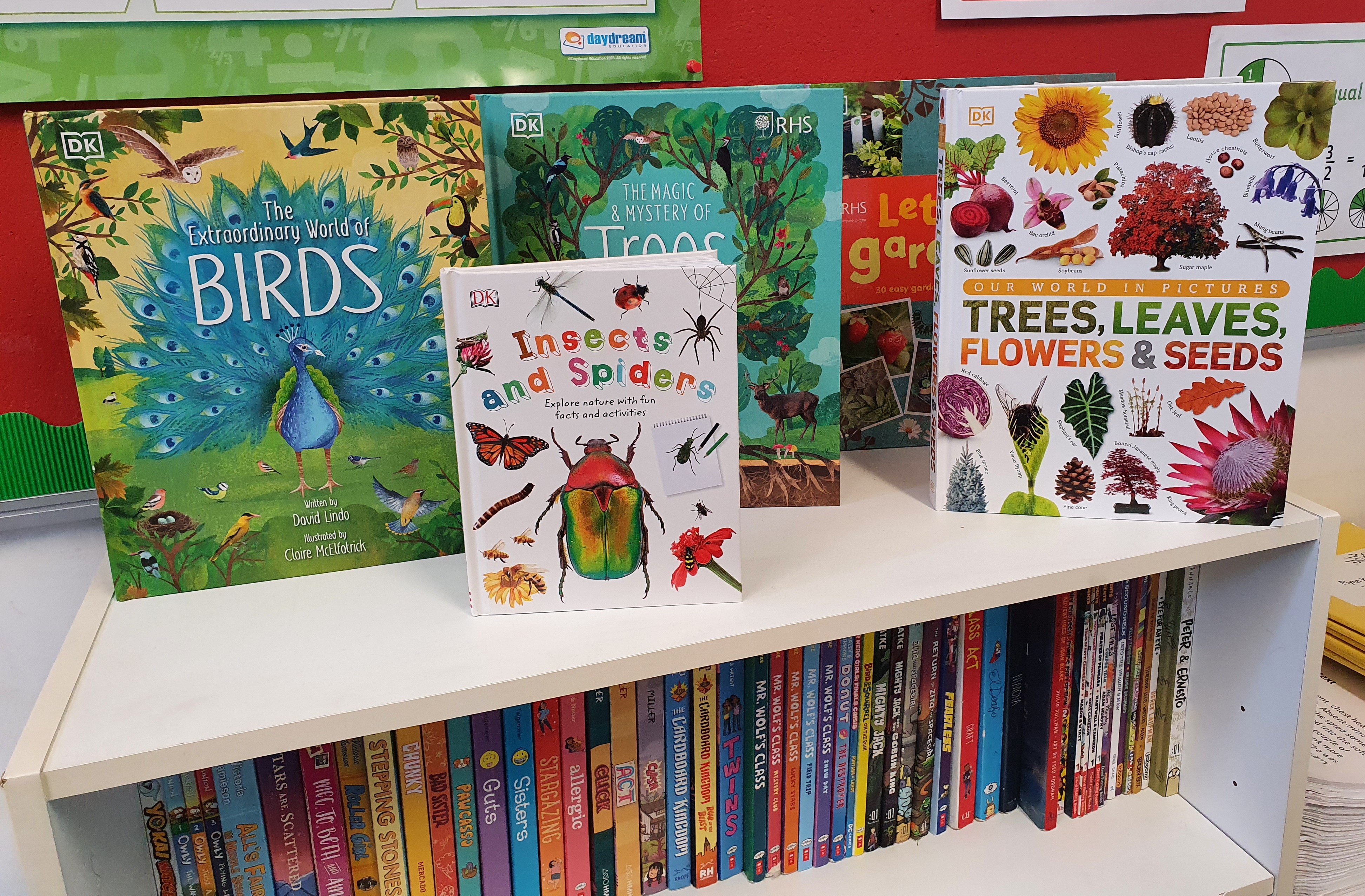Article Post
Sep 06 2022
by Jon Biddle
Our School Wildlife Meadow

A few months ago, I displayed a copy of DK’s thoroughly enjoyable The Extraordinary World of Birds on my classroom recommendations shelf. It immediately became a popular book during quiet reading time due to its accessibility, its colorful illustrations, and the fact that it provided so many opportunities for the children to talk together. There were a couple of pages in particular that they referred to repeatedly: 'Helping Birds' and 'Birds at Risk.' A number of them delighted in telling the class about what they were doing in their gardens at home to help birds and wildlife.

These conversations coincided beautifully with our class topic, which was 'Sow, Grow and Farm.' We had already started planting seeds and bulbs in pots to help learn about plant life cycles and were enjoying watching them grow. The children pointed out that we also had a small area of waste ground just outside our classroom door, which had never been used in the seven years that I have taught here. We decided it would be a great idea to turn it into a wildlife meadow for birds.
My class was immediately excited and began swapping ideas and suggestions. Over the next few weeks, the project took on a life of its own. Gardening gloves and spades were brought in, and we organized a rota so everyone could help dig and prepare the ground. Once that was finished, the children explored which plants they wanted to grow in order to help the wildlife. We used DK’s Let’s Get Gardening and Trees, Leaves, Flowers and Seeds to come up with a list of suggestions, asked parents for donations of seeds and bulbs, then planted them and waited for green shoots to start coming through. The class took it in turns to water the seedlings on days when there was no rain and, when the first flowers started appearing, there was a sense of real elation.

One group, which included some keen anglers, was eager to build a small container pond to help aquatic creatures, and a variety of washing-up bowls and containers started appearing in the classroom. Again, the children took responsibility for doing the research, using Let’s Get Gardening to help them select appropriate water plants. We also created some bug hotels for the shadier areas of the garden with old pallets stuffed with twigs, ceramic pots, bark and pine cones.
By now, the project was self-sustaining, and my role had become little more than that of an interested, and very proud bystander. The children were concerned that other classes might walk on ‘their’ meadow and created ‘Keep Off the Garden’ posters at home. Some of them even took it in turns to be human scarecrows and stood next to the meadow looking menacing as other classes walked past at the end of the day.
The children were now reading ever more about nature and wildlife, and getting increasingly excited about future possibilities for the area. One parent donated back copies of Gardeners’ World, which became essential classroom reading within a few days. We invested in books across the school in order to learn more about the kind of wildlife that might start to appear: birds, insects, frogs, and possibly even some small mammals.

As part of our English work, the children started writing to local organizations and companies and our local garden center, who generously donated several plants and some gardening equipment. In Science, we created ‘Top Tips for a Wildlife Meadow’ posters to share with parents, as well as some PowerPoint presentations about our project in computing.
Creating our class wildlife meadow is, without doubt, one of the most successful mini-projects that we have attempted as a class. It is now visited far more frequently by birds—we saw a goldfinch there only yesterday—and the flowers are attracting a variety of butterflies and bees.
